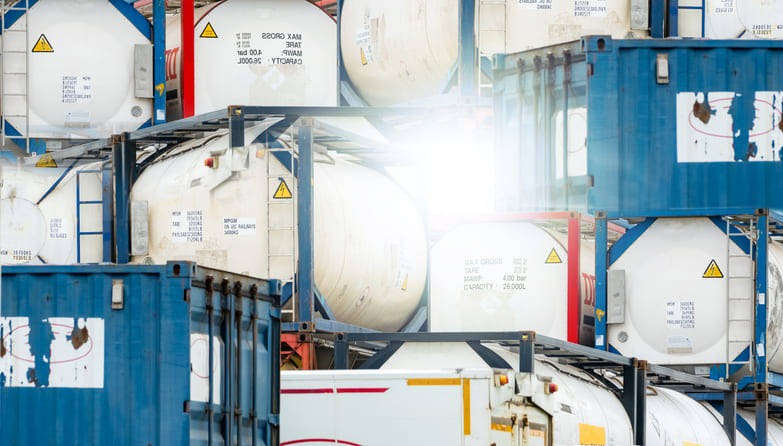What are spirits and how are they transported?
Table of contents
- What are spirits?
- What are spirits’ history?
- The spirits industry today
- What are spirits made with?
- What are spirits and how do they differ in production methods?
- What are spirits logistics and how are spirits transported?
- What are spirits logistics providers?
- Let Hillebrand Gori handle your spirits logistics
Spirits hold a special place in the world of alcoholic beverages. They are enjoyed globally and are commonly found in various social settings, from casual gatherings to upscale events. As one of the oldest forms of alcohol, spirits have a rich history and diverse production methods, but what are spirits, exactly?
What are spirits?
Spirits, also known as liquor, are alcoholic beverages produced through distillation. Unlike wine and beer, which are fermented, spirits undergo a distillation process, which concentrates the alcohol content and enhances flavours. This process involves heating a liquid mixture to create vapour and then cooling it to condense the vapour back into a liquid form.
This process results in a beverage with a higher alcohol by volume (ABV) percentage, compared to fermented wine and beer.
What are spirits’ history?
The production of spirits can be traced back thousands of years to ancient civilizations in the Middle East and Asia. Early distillation methods were used primarily for medicinal and religious purposes. The precise origins of distilled beverages are not well-documented, but historical records suggest that distillation techniques evolved over time, gradually spreading across different regions of the world.
The initial spirits derived from sugar-based sources, predominantly grapes and honey for grape brandy and distilled mead respectively. While the exact origins of using starchy grains for distillation are unclear, their utilization likely began during the Middle Ages.
Early distillation apparatus consisted of basic components: a heated enclosed vessel, a condenser, and a container for collecting the condensed liquid. These apparatuses evolved into pot stills, which remain in use today, particularly for crafting malt whiskies and certain gins.
Another advancement was the introduction of column stills, where the alcohol-containing liquid is heated in a series of stacked vaporization chambers. By the early 19th century, large-scale continuous stills, akin to modern industry standards, were operational in France and England.
The spirits industry today
Spirits have seen a surge in popularity globally, with an increasing number of people exploring different varieties and brands. Key facts you should know:
- According to recent reports, the worldwide spirits market will grow from $619.54 billion in 2024 to $825.57 billion by 2029.
- Today, China has the world's largest spirits market, with over $140 billion in revenue generated in 2022.
- Spirits outsold beer in the US for the first time (2022)
- The United Kingdom became the world’s leading spirits exporter (2022).
From traditional whiskey distilleries in Scotland to innovative craft distillers in the United States, the world of spirits continues to evolve and expand. Emerging markets in regions like Asia-Pacific are contributing to the industry's expansion, indicating a promising future for the spirits sector.
What are spirits made with?
The distillation process involves several key components and specialised equipment. Essential elements include a still, which is the apparatus used for distillation, and the raw ingredients, such as grains, fruits, or botanicals, depending on the type of spirit being produced. The still typically consists of a boiler, a condenser, and a collection vessel, all crucial for the separation and concentration of alcohol.
What are spirits and how do they differ in production methods?
Spirits are broadly categorised into several main types, each with distinct characteristics and production methods. The flavour profile of a spirit is influenced by the ingredients used during production. These ingredients can vary widely, from grains and sugarcane to botanicals and fruits, each contributing unique characteristics to the final product.
Whiskey
Whiskey is a distilled alcoholic beverage made primarily from fermented grain mash, which may include barley, corn, rye, and wheat. It is typically aged in wooden casks, imparting complex flavours and aromas.
Vodka
Vodka is a neutral spirit traditionally made from grains or potatoes. It is known for its clear appearance and subtle flavour, making it a versatile base for cocktails.
Rum
Rum is a spirit made from sugarcane byproducts, such as molasses or sugarcane juice. It can vary widely in flavour, ranging from light and floral to rich and complex, depending on the production method and ageing process.
Gin
Gin is a flavoured spirit primarily derived from juniper berries and other botanicals. It is known for its distinct herbal and aromatic qualities, which vary based on the botanical blend used during production.
Tequila
Tequila is a distilled spirit made from the blue agave plant, primarily produced in the Tequila region of Mexico. It can range from earthy and vegetal to smooth and sweet, depending on the ageing process and quality of the agave used.
Brandy
Brandy is a spirit distilled from fermented fruit juice or fruit mash, with grapes being the most common base ingredient. It encompasses a wide range of styles, from light and fruity to bold and complex, influenced by factors such as grape variety and ageing.
What are spirits logistics and how are spirits transported?
Spirits are transported using specialised logistics and transportation services to ensure their safe and efficient delivery from destillers to consumers worldwide. The laws governing the transportation of spirits in bulk are strict and must be followed closely to prevent delays, penalties, or damage to products.
Due to their high ABV, spirits are flammable and in certain instances classed as dangerous goods (DG), like in bulk volumes. Consequently, flexitanks are unsuitable for transporting spirits, as they are designed for non-hazardous liquids. Instead, spirits must be transported in bottles or ISO tanks, which are robust, reusable containers suitable for bulk transportation of hazardous liquids. However, when transported in bottles (less than 70% ABV) they are not classified as dangerous.
What are spirits logistics providers?
Spirits logistics providers facilitate the movement of spirits from where they are crated to where they are consumed. They do this by connecting distillers, bottlers, distributors, retailers, and importers. At Hillebrand Gori, our primary goal is to make alcoholic beverage transportation easy for all stakeholders. In addition to distilled beverages, we transport all components essential for their production, including grains, bottles, caps, and casks, offering end-to-end solutions from crafting spirits to delivering them to their destination.
Our myHillebrandgori app empowers you to stay informed about your shipments, allowing you to:
- Track the location of your spirits throughout the entire journey.
- Maintain communication with all parties involved in the supply chain.
- Instantly access order details, SKUs, and product codes.
- Receive real-time updates via push notifications.
- See the temperature along the shipment’s route
- Measure CO2 emissions for each shipment.
- Manage your orders to mitigate delays and reduce transportation costs.
Let Hillebrand Gori handle your spirits logistics
With Hillebrand Gori managing your spirits logistics, you can focus on your core priorities. From the production site to the importer’s warehouse, our meticulous planning, regulatory compliance, and collaboration with experienced carriers ensures the seamless flow of spirits. Contact us today for a quote and experience the convenience of letting Hillebrand Gori handle your spirits' logistics.
Published 18th March 2024
The terms "spirit" and "alcohol" are often used interchangeably, but they refer to different aspects of alcoholic beverages. "Alcohol" is a chemical compound known as ethanol, which is the primary psychoactive ingredient in alcoholic drinks. On the other hand, "spirits" refers to specific types of alcoholic beverages produced through distillation, containing higher concentrations of alcohol compared to beer and wine.
Spirits contain calories primarily derived from alcohol, with little to no nutritional value. They are typically low in carbohydrates, fats, and proteins. A standard serving of spirits, such as a shot or 1.5 ounces, contains around 97 calories. However, the calorie content can vary depending on the specific type of spirit and any additional ingredients used in cocktails or mixers.
Any spirit can be used to make a cocktail. Cocktails are simply mixed drinks made with distilled liquor. Examples include margaritas, martinis, and mai tais.
How can we help your business grow?
.png?sfvrsn=312da2e2_1)




